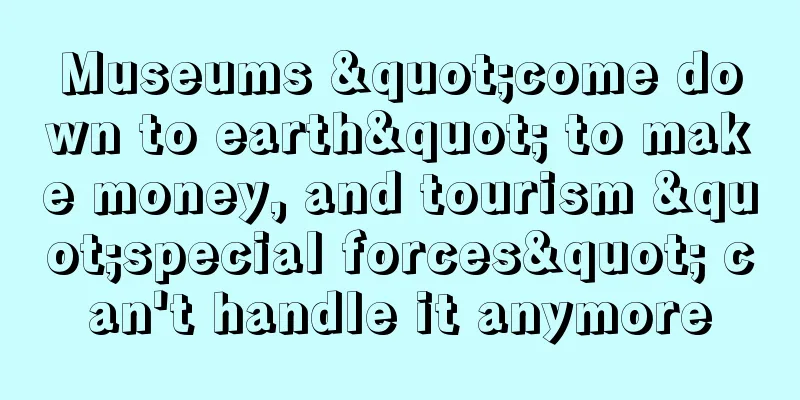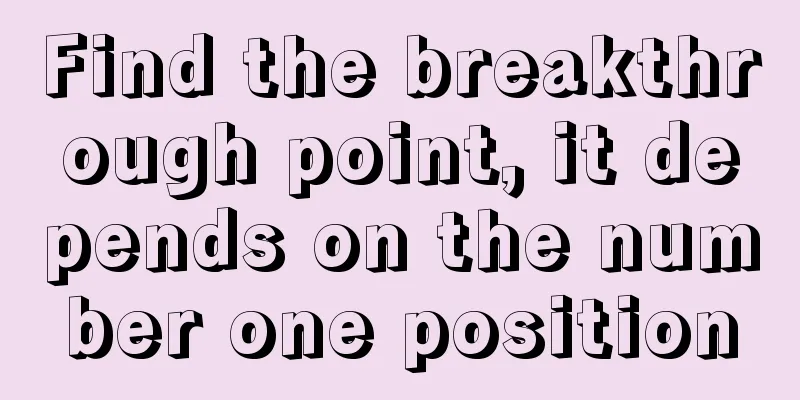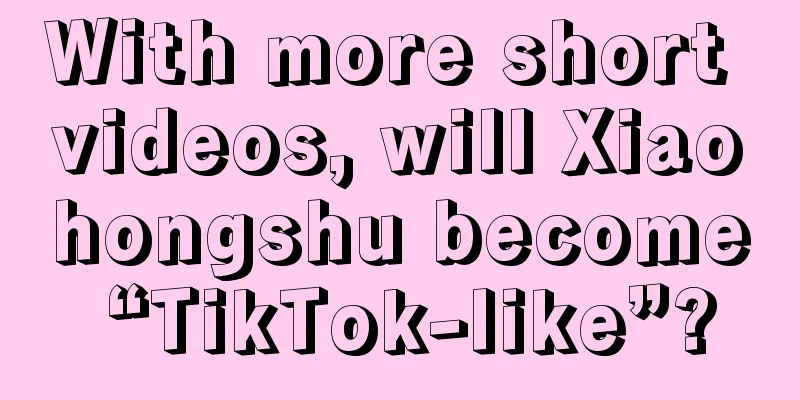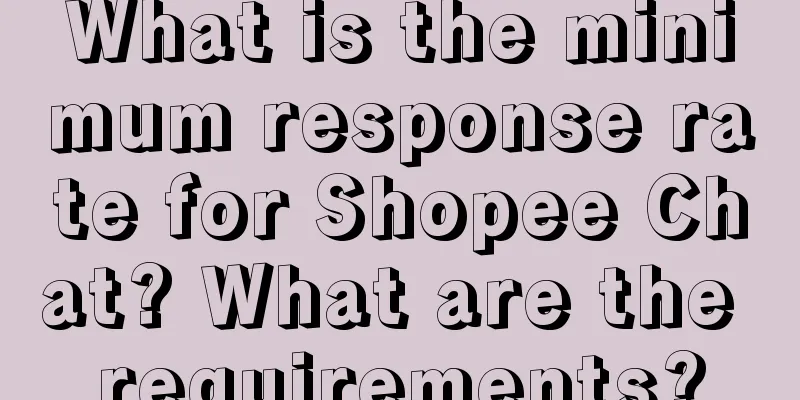Museums "come down to earth" to make money, and tourism "special forces" can't handle it anymore

Visiting a museum is a serious matter - I used to think it was okay. After all, for those who are under great psychological pressure and shy, being teased by someone saying "Hey, you are a cultured person" would make them blush for a long time. The amazing thing is that now, the natural barrier of this event among the crowd has disappeared. In other words, the museum has become a "must-visit check-in point" in the travel guide of any tourist city. For example, Zibo, a small city in Shandong, became popular for its barbecue, and its four museums (Zibo Ceramics and Glass Museum, Zibo City Museum, Qi Culture Museum, and China Ancient Vehicle Museum) have also become "rich" local tourist resources. Beijing has more than 200 museums. For popular museums such as the National Museum, you need to grab reservations during peak hours. For niche museums such as the China Watermelon Museum in Panggezhuang, Daxing, it has also been discovered on social platforms and is a popular place to hang out. Not to mention the well-known provincial and municipal museums such as the Henan Provincial Museum, Gansu Provincial Museum, Shaanxi History Museum and Nanjing Museum, which are also hard to get tickets for on weekends. In order to avoid being accused of having a "crooked butt", we have to be on guard against arguments first. This article does not mean to express the view that "there is still a certain threshold to visiting a museum". What is worth discussing is how the current museums can successfully "come down to earth" and attract a wider range of people. It is hard to deny that developed social media platforms such as Douyin, Xiaohongshu and Weibo are important media for promoting these museums to go viral. This includes the dissemination of travel guide lists, cultural relics and their peripheral products. Behind this is the serious and formal operation of museums to become younger and more internet-famous. The term "Internet celebrity" is applied to museums, and the latter's old-fashioned and dullness directly neutralizes its negativity. For museums, Internet celebrity is a transformation step towards the entertainment spirit and the people-friendly direction, and such a change is warmly welcomed. Of course, we must also recognize that this is also a real "entry into the world" for museums. 1. Make moneyIn the past two years, Zheng has visited the Henan Museum three times. She admitted that checking out the new cultural and creative products is an important reason for going to the Henan Museum. The first time she went there was in February last year. When she was leaving, Xiao Zheng discovered the cultural and creative area at the exit. She saw many people gathered around a table to stamp their products, but because it was close to closing time, the stamps were quickly taken away by the staff. She was very interested and lined up early the next day. This time, in addition to stamping, she also bought a lot of cultural and creative products that she fell in love with at first sight. A metal bookmark with a four-god cloud pattern, beautifully made; a copper forbidden cat refrigerator magnet with a cloud pattern, just right for friends; a gilded archaeological blind box, with the fun of gilding by yourself. Not long ago, she saw a post about a blind cake box on Xiaohongshu, which attracted her to go there again. It was a cake with a small shovel, with well-known cultural relics buried in the museum, which could be dug out when eating the bottom. It was made of sugar and was edible. It cost 60 yuan each, which was not cheap, but many parents still bought it for their children. Source: Interviewee Stamping is a travel check-in trend that has emerged in recent years. Museums, art galleries and well-known scenic spots will launch corresponding services and sell "passport books" of varying prices. On social platforms, if you collect all the stamps in the book, you can easily become a traffic expert at the top of the contempt chain. And there are many people like Xiao Zheng who can't help but buy cultural and creative products. The "Big Sword" of Hubei Provincial Museum is the most popular item in the cultural and creative area recently. It is actually a cute stuffed toy of the Sword of Goujian, King of Yue, in the museum's collection. As a counterpart, the Sword of Fuchai, King of Wu, in Suzhou Museum has also been updated. The cultural and creative products of the two swords in the two museums are even linked. Many consumers go to the two places to collect swords, "With the Big Sword in hand, the world is mine". The Henan Museum, where Xiao Zheng lingered, established a cultural and creative department in February 2019 and created its own main brand "Henan Museum Cultural and Creative". According to the official website, it has developed nearly 2,000 cultural and creative products and has nearly 200 cooperative enterprises. At the same time, it has launched its own online malls on Tmall, Taobao and JD.com. In September 2021, the West Building of Suzhou Museum was completed and opened. Among them, the focus was on the construction of an art store. The official introduction said: In addition to presenting cultural and creative products extended from Wudi cultural relics, it also selects exemplary designs of inheritance and innovation from around the world. Self-developed products and more than 40 selected brands expand the boundaries of "cultural and creative". Image source: Suzhou Museum official website Museums are becoming more and more adept at "doing things" - consistent with our actual experience, in recent years, museums across the country have indeed accelerated the development of cultural and creative products. Of course, the earliest museum to do so was the Palace Museum. As early as 2008, the Palace Museum established a cultural and creative center, but it had not made any progress. After Shan Jixiang, director of the Palace Museum in Beijing, visited the National Palace Museum in Taipei for exchanges, he opened up his mind. Shan Jixiang said: "After visiting the National Palace Museum in Taipei, I found that there are two major problems in the marketing of the Palace Museum's cultural and creative products. One is that there is a lack of cultural and creative products with the Palace Museum's characteristics in the store. 80% of them are from other units. The second is that there is a lack of cultural atmosphere and the commercial atmosphere is too strong. Although the Taipei Palace Museum is not large, it is full of small commodities that combine social creativity, especially some practical and interesting things." (Excerpt from Shan Jixiang's speech at the "Ministry of Culture's Press Conference on Promoting the Development of Cultural and Creative Products", 2016) The experience was quickly put into practice. In 2013, the Taipei National Palace Museum's cultural and creative product "I know" Emperor's red-stamped paper tape became popular. The unit price was 42 yuan, but it was sold for hundreds of yuan in the second-hand circulation. In 2014, the Palace Museum's Kangxi's cute "I am such a man" folding fan and other products were developed. As expected, once launched, they set off a discussion and buying frenzy online and offline. One set of data is that by the end of 2015, the Palace Museum had produced more than 8,700 cultural and creative products with a turnover of over 1 billion yuan. Image source: Forbidden City Taobao In essence, the revenue pressure of museums is the core reason that has prompted museums from the Forbidden City to local provincial and municipal museums to start commercial operations. Shan Jixiang once shared that the state provides 54% of the funds to the Forbidden City every year, and the other 46% is earned by itself. More importantly, in 2008, the Publicity Department of the CPC Central Committee, the Ministry of Finance, the Ministry of Culture and the State Administration of Cultural Heritage jointly issued the "Notice on the Free Opening of National Museums and Memorial Halls", which caused a sharp drop in ticket revenue, and also prompted various units to find market-oriented solutions besides financial subsidies. Cultural and creative derivatives are the simplest, most direct and proven path. The British Museum and the Metropolitan Museum of Art in New York have been quite successful. The former began to develop cultural products in the 1970s, with revenue from this segment exceeding 13 million pounds in 2018, while the latter's Metropolitan Museum Store also achieved revenue of 85.842 million US dollars in 2018. It can be said that as long as a museum wants to make money, it is really easy. 2. Why Internet Celebrities?Making money is the goal, and cultural creation is the means, but museums are indeed more popular online. In other words, rich and diverse cultural and creative products are actually a factor that attracts the public to visit museums. A representative example is the bronze galloping horse, the treasure of the Gansu Provincial Museum. The green ponies "Tiaotiao and Benben" designed based on this are ugly, cute and magical. According to the official introduction, it is a derivative product of the Gansu Provincial Museum's "Here Comes the Magic Horse" bronze galloping horse cultural and creative IP. The designer said that this green horse doll is full of positive and optimistic spirit, and wants to convey simple and real happiness and full of green blessings, fearless and joyful. In the Gansu Provincial Museum Tmall flagship store alone, this green pony has received more than 6,000 purchase reviews and has remained the store's best seller since its launch last year. The ugly and cute series has also been further explored, including the bronze yak cultural and creative doll "Angry Moo King" and the red pottery human-faced cultural and creative doll "Big Face Meng Arrives". Image source: Gansu Provincial Museum Tmall flagship store On social platforms, many users chose to visit the Gansu Museum because of the popularity of the little green horse. It can be said that the traffic was quite successful. Another typical example is the "Silent Bodhisattva" which became popular on the Internet because of its emoticons. Its prototype, the "Meditating Arhat" statue located in the Jingdezhen China Ceramics Museum, also became a top trend last year and almost single-handedly brought fame to this museum, which was not originally in the mainstream vision. Entertainment and personalization are the most appropriate answers to the question of "what kind of products can go viral". In other words, no young people want to go to museums to relieve stress in addition to their already tiring and boring lives. They will go to any place that can provide a sense of relaxation. It has to be said that contemporary museum cultural and creative products are able to accurately capture the hearts of young people, and behind this is an increasingly mature cultural and creative design industry chain. Just for the cultural and creative ice cream that has been popular in recent years, there are professional design studios like Beibeiping that provide services. Similarly, cultural and creative derivatives such as stationery also have design companies such as Rococo. In an interview with Henan Daily, the Henan Museum also mentioned that the museum has carried out in-depth cooperation with more than 100 cultural and creative enterprises and many universities in and outside the province. According to the "2021 China Cultural and Museum IP Commercialization Research Report" released by iResearch Consulting, the industry chain structure consists of three parties: the upstream, namely the IP holders represented by museums, the midstream, namely the IP operators, and the downstream channel parties. Among them, the IP direction authorizes the operator to jointly develop the IP, and the latter returns the profit share or copyright share, while the channel party undertakes the commercial operation and implementation of the IP and is responsible for the sales of products and services. In addition, the development of cultural and creative products is mainly divided into independent research and development, that is, the museum is fully responsible for product research and development, owns all product copyrights and profits, as well as joint branding, authorization and cooperative development models. Judging from the current actual operation, well-known provincial and municipal museums in particular tend to set up their own cultural and creative R&D teams and recruit young design talents. For example, the Palace Museum has a cultural and creative team of more than 150 people, covering all aspects of cultural and creative product planning, design, production and sales. Museums are increasingly determined to actively approach and understand young people. 3. FinallyAt the end of the article, you will find that a large part of the article discusses how museums are betting on cultural and creative derivatives and how derivatives can attract tourists in return. What is the answer to the question "Why are more and more people starting to visit museums?" Relying on cultural and creative products to "enter the world" is the premise for museums to get closer to a wider range of people. Objectively, the stamping behavior and the prototypes of the museums corresponding to the Internet celebrity cultural and creative products are indeed one of the sources of huge traffic. This is an analysis of the current phenomenon. As for the exact answer to the question, it actually depends on one's own opinion. Amid the hot domestic travel craze, free museums are naturally a good place for young people who are more looking for cost-effectiveness and special forces travel experience. At the same time, paying more and more attention to exploring traditional culture is also a hobby trend among some young people nowadays. But these are not necessarily the answers given by the "you" in front of the mobile phone screen, right? |
<<: Why did a bunch of ordinary bananas become an Internet sensation?
Recommend
With over 300 million yuan bet on the European Cup, can Chinese brands rest easy?
Why did the European Cup attract so many Chinese b...
Want to win the battle for overseas traffic? Don’t miss these festivals in December this year!
This article starts from overseas history and cult...
10 insightful sentences
This article summarizes 10 groups of excellent cop...
Is Alipay Life Account the next short video trend?
When Alipay Life Account fully opens the UGC entra...
The logic of brand "social currency"
If a brand wants to "invade" the minds o...
Shopee Malaysia 88 Big Sale Launches Grand Prize Sprint Event
Shopee Malaysia’s 88 Big Sale Grand Prize Sprint E...
Wang Po stopped, but Henan did not
This article explores in depth how the "Wang ...
How to ship Gmarket from South Korea to China? Where to transfer logistics from South Korea to China?
More and more people are choosing to look for more...
Fenghua’s 79-yuan meal set is selling out. How can old domestic brands retain traffic after the carnival?
This article will introduce the precise marketing ...
Can I modify the price after listing on Shopee? How to set up discounts?
As e-commerce platforms continue to grow, more and...
The "Creator Profit Plan" of Video Account has been officially launched. Is this the opportunity for creators?
Introduction: As a rising star in the short video ...
The low prices online can actually be criticized
Some netizens have discovered that by "scoldi...
Three ways to celebrate the Qixi Festival
Find different role positioning, and the brand&#...
What is easy to sell on Shopee Taiwan? What is not easy to sell?
Cross-border e-commerce is a very hot and promisin...
When is Amazon's Black Friday? How big are the discounts?
There are still many users who shop on Amazon, but...









